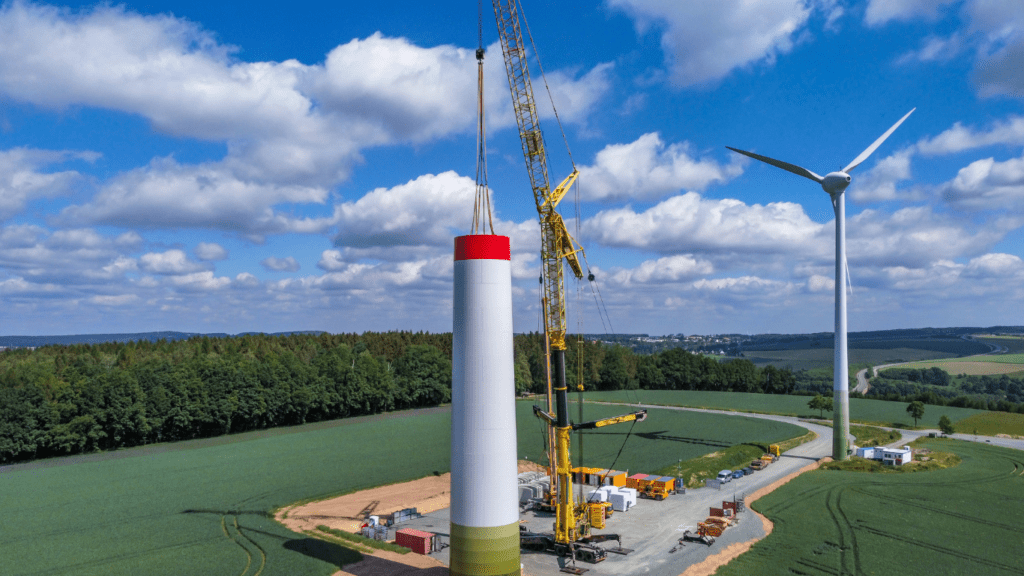What Is Blockchain?
A blockchain is a decentralized digital ledger that records transactions across multiple computers. It ensures data integrity by making entries immutable and transparent.
Basic Principles
Blockchain operates on a few essential principles. First, information is recorded in blocks, and each block contains transaction data. Second, these blocks link to form a chain, with each block referencing the previous one. This structure makes tampering with data extremely difficult since altering one block would require changing all subsequent blocks.
Consensus mechanisms, like;
- Proof of Work (PoW)
- Proof of Stake (PoS)
verify transactions. PoW involves miners solving complex mathematical problems, while PoS requires validators to own a stake in the cryptocurrency network. Both mechanisms aim to secure the network and verify transactions without central authority.
Popular Applications of Blockchain
Several industries use blockchain technology to improve operations.
- Finance: In finance, blockchain enables faster, cheaper cross-border payments. Cryptocurrencies like Bitcoin and Ethereum facilitate peer-to-peer transactions without intermediaries.
- Supply Chain Management: Blockchain enhances transparency and traceability in supply chains. Companies like IBM and Walmart use blockchain to track product origins, ensuring authenticity and reducing fraud.
- Healthcare: In healthcare, blockchain secures patient records. It ensures data is accurate, up-to-date, and accessible to authorized personnel only.
- Real Estate: Real estate transactions benefit from blockchain by automating property transfers and reducing paperwork. Platforms like Propy offer blockchain-based solutions for buying and selling properties.
By understanding these principles and applications, we can better evaluate blockchain’s environmental impact discussed earlier.
Environmental Concerns of Blockchain

Blockchain offers significant advantages, but it raises critical environmental concerns related to its operations.
Energy Consumption
Energy consumption of blockchain is a major concern. Bitcoin mining alone consumes around 120 terawatt-hours per year, equivalent to the total energy usage of some countries. Proof-of-Work (PoW) algorithms, central to many blockchains, require miners to solve complex mathematical problems which demand substantial electricity.
Ethereum, another prominent blockchain, also consumes high levels of energy, though it’s transitioning to Proof-of-Stake (PoS), which is much more energy-efficient. Alternative consensus mechanisms like PoS aim to reduce energy consumption by selecting validators based on the number of tokens they hold and are willing to “stake” as collateral.
Carbon Footprint
The carbon footprint of blockchain solutions draws concern due to high energy requirements. Most miners operate in regions with coal or natural gas-based grids, worsening the carbon impact. For instance, a single Bitcoin transaction can have a carbon footprint equivalent to 680,000 Visa transactions or 51,210 hours of watching YouTube.
While some mining operations have shifted to renewable energy sources, the industry’s overall reliance on fossil fuels remains a significant problem. Transitioning to greener energy and adopting less energy-intensive consensus mechanisms are essential steps to mitigate the environmental impact.
Comparative Analysis with Traditional Systems
Traditional systems in finance and data management have different environmental impacts compared to blockchain technology. Assessing these helps identify areas for improvement and balance the benefits against environmental costs.
Energy Use in Traditional Banking
Traditional banking relies on extensive branch networks, ATMs, data centers, and transaction processing systems. The energy consumption of these elements is substantial but often goes unnoticed.
According to the International Energy Agency, the global banking sector uses around 260 TWh annually. This energy usage often comes from a mix of fossil fuels and renewable sources, differing by region and institution.
Efficiency in Data Centers
Data centers that support traditional banking and other industries require significant energy for both operation and cooling. Modern data centers aim to improve efficiency through advanced cooling methods and energy management systems.
Companies like Google and Amazon achieve Power Usage Effectiveness (PUE) scores of 1.11, indicating efficient use of energy. Blockchain-based data storage can offer decentralized alternatives, but existing data centers continually evolve to minimize their environmental footprint and maintain high efficiency.
Sustainable Blockchain Solutions
Identifying sustainable strategies for blockchain technology is essential for reconciling its innovative potential with environmental stewardship. Addressing energy usage and integrating renewable sources are vital components.
Energy-Efficient Consensus Algorithms
Energy-efficient consensus algorithms significantly reduce blockchain’s energy consumption. Unlike Proof-of-Work (PoW), Proof-of-Stake (PoS) minimizes energy use by requiring validators to hold a stake in the network rather than solving complex cryptographic puzzles.
This approach not only cuts electricity consumption but also lowers hardware demands, reducing electronic waste. Delegated Proof-of-Stake (DPoS) further refines this model by delegating validation tasks to a smaller, elected group, enhancing efficiency and scalability. For instance, Ethereum’s transition to PoS is projected to cut its energy usage by over 99%.
Renewable Energy Integration
Integrating renewable energy sources can mitigate blockchain’s carbon footprint. Using solar, wind, and hydropower in blockchain operations lowers greenhouse gas emissions linked to fossil fuels.
Projects like SolarCoin incentivize renewable energy production by rewarding solar energy producers with cryptocurrency. Furthermore, initiatives such as the Energy Web Foundation (EWF) support blockchain-based renewable energy applications, demonstrating the feasibility of green blockchain infrastructure. By prioritizing clean energy, blockchain networks can operate sustainably and align with global environmental goals.
Real-World Examples and Case Studies
Real-world initiatives and case studies demonstrate how blockchain can impact the environment positively. These examples illustrate the practical application of green blockchain technologies.
Green Blockchain Initiatives
Several green blockchain initiatives focus on reducing the energy footprint of blockchain. SolarCoin, a blockchain-based cryptocurrency, rewards solar energy producers with digital coins. SolarCoin aims to incentivize renewable energy generation by providing financial rewards for solar energy production.
The Energy Web Foundation (EWF) builds blockchain-based infrastructure to support the decarbonization of the energy sector. EWF’s platform facilitates energy trading, grid balancing, and the integration of renewable energy sources. By leveraging blockchain, EWF aims to create a cleaner and more efficient energy grid.
Chia Network uses a Proof-of-Space-and-Time (PoST) consensus algorithm, which significantly reduces energy consumption compared to Proof-of-Work (PoW) systems. Chia’s innovative approach emphasizes sustainability and resource efficiency, providing a viable model for eco-friendly blockchain networks.
Corporate Responsibility Projects
Corporations are integrating blockchain into their sustainability strategies. IBM’s Food Trust blockchain enhances supply chain transparency and reduces food waste. By enabling traceability from farm to table, this platform helps minimize environmental impacts associated with food production and distribution.
Walmart collaborates with IBM to track its food supply chain using blockchain technology. This ensures better food safety and reduces waste, demonstrating how corporations can leverage blockchain for environmental benefits.
Microsoft’s blockchain initiatives focus on carbon footprint reduction. Their Project Aria utilizes blockchain to monitor carbon emissions and manage carbon credits, showcasing blockchain’s potential in corporate sustainability efforts.
By showcasing these real-world examples, it’s clear how blockchain can contribute positively to environmental sustainability when implemented thoughtfully.



 Chief Technology Officer (CTO)
As Chief Technology Officer, Victor Kenneyell oversees the technical infrastructure and development strategies of the website. With a background in computer science and blockchain engineering, Victor ensures that the platform remains at the forefront of technological advancements in the crypto industry. His expertise in smart contracts, cybersecurity, and blockchain scalability solutions helps the website provide users with a secure and innovative experience.
Chief Technology Officer (CTO)
As Chief Technology Officer, Victor Kenneyell oversees the technical infrastructure and development strategies of the website. With a background in computer science and blockchain engineering, Victor ensures that the platform remains at the forefront of technological advancements in the crypto industry. His expertise in smart contracts, cybersecurity, and blockchain scalability solutions helps the website provide users with a secure and innovative experience.
